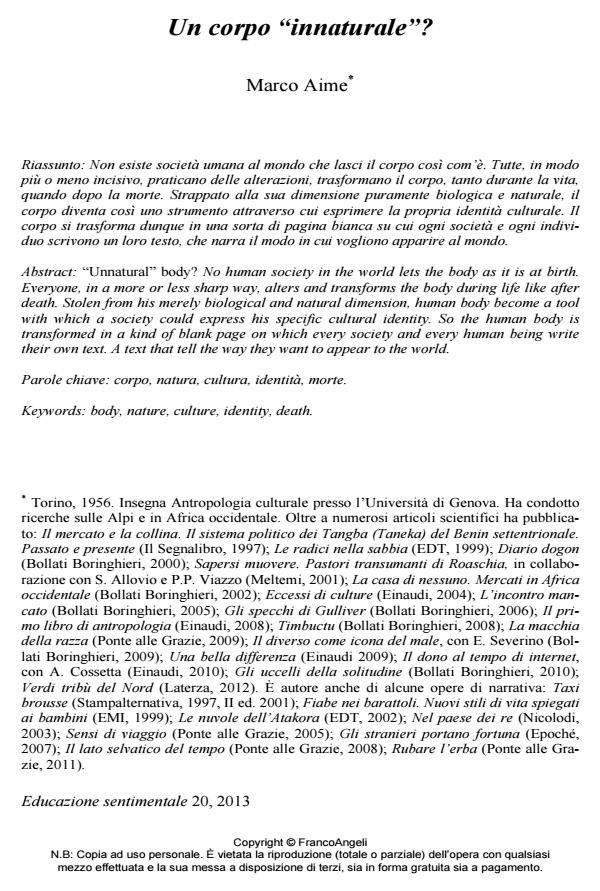"Unnatural" body?
Journal title EDUCAZIONE SENTIMENTALE
Author/s Marco Aime
Publishing Year 2013 Issue 2013/20
Language Italian Pages 9 P. 130-138 File size 638 KB
DOI 10.3280/EDS2013-020012
DOI is like a bar code for intellectual property: to have more infomation
click here
Below, you can see the article first page
If you want to buy this article in PDF format, you can do it, following the instructions to buy download credits

FrancoAngeli is member of Publishers International Linking Association, Inc (PILA), a not-for-profit association which run the CrossRef service enabling links to and from online scholarly content.
No human society in the world lets the body as it is at birth. Everyone, in a more or less sharp way, alters and transforms the body during life like after death. Stolen from his merely biological and natural dimension, human body become a tool with which a society could express his specific cultural identity. So the human body is transformed in a kind of blank page on which every society and every human being write their own text. A text that tell the way they want to appear to the world.
Keywords: Body, nature, culture, identity, death.
Marco Aime, Un corpo "innaturale"? in "EDUCAZIONE SENTIMENTALE" 20/2013, pp 130-138, DOI: 10.3280/EDS2013-020012